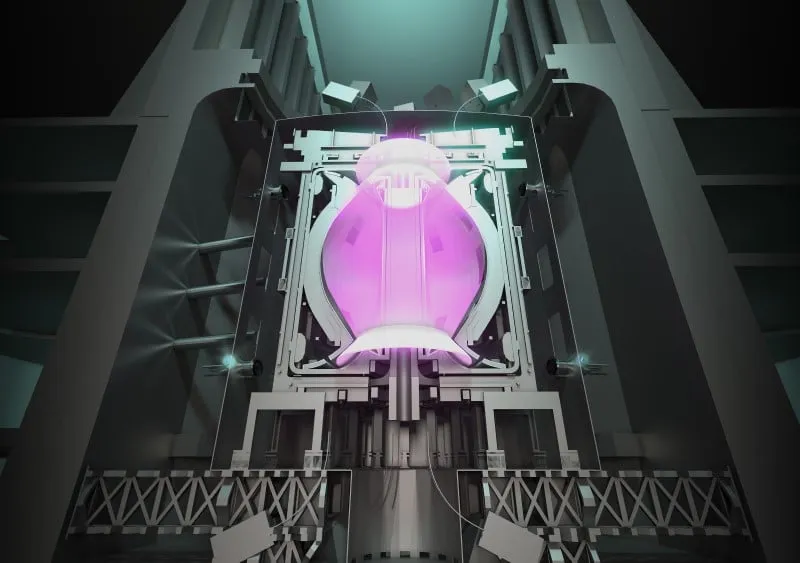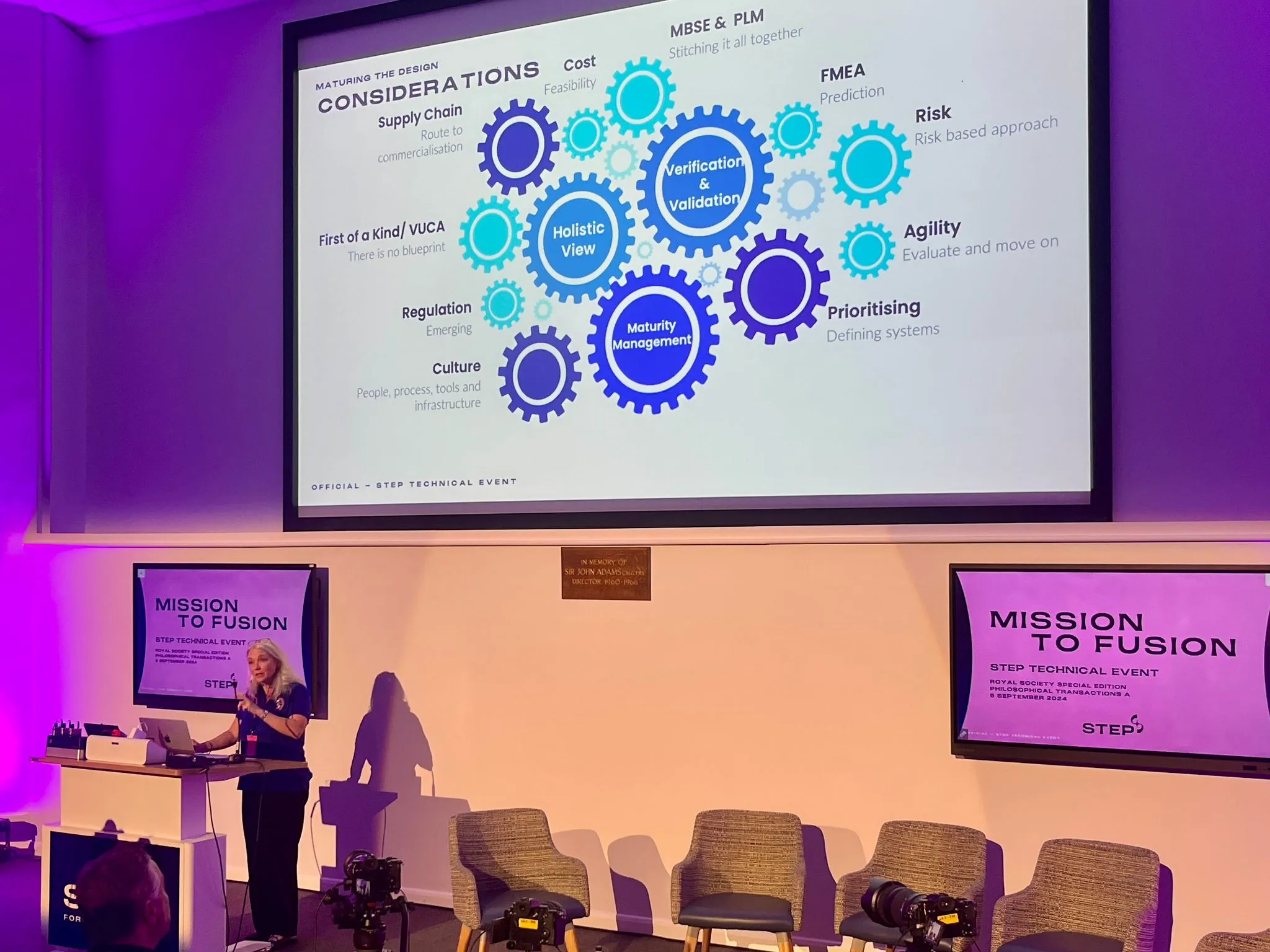Royal Society releases key publications on STEP roadmap to fusion energy
By Lizzie Mushangwe
The Royal Society has released a special edition of its esteemed journal, Philosophical Transactions A, in collaboration with the Spherical Tokamak for Energy Production (STEP) programme. Published on Monday, August 26th, this edition marks a crucial step in the UK’s pursuit of commercially viable fusion energy.
An accompanying technical event on August 5th provided a platform for key figures in the fusion community to discuss the practical roadmap for building STEP, the world’s first fusion power plant, and emphasised the broader implications for the global fusion energy landscape.
Notably, it was emphasised that is not a final solution but an adapting step toward creating a viable fusion power plant at the West Burton site in Nottinghamshire. Ian Chapman (CEO of UKAEA), spoke on behalf of his fellow guest editors Steve Cowley, and Howard Wilson. These co-authors led the review of the technical papers, and underscored this message saying that publication is "not the definitive roadmap but a snapshot in time which will continue to evolve".
These papers present a wealth of technical insights that reflect five years of research and highlight the challenges ahead that need to be overcome to bring fusion energy into the commercial realm.

© Royal Society Publishing
What have they done?
The special issue of Philosophical Transactions A includes 14 essential papers which explore various aspects of STEP’s approach to overcoming the complex engineering challenges associated with commercial fusion energy. These papers cover topics from plasma physics to power plant architecture, providing a comprehensive framework for bringing fusion energy closer to reality.
While the technical event highlighted many of these contributions, the publication also contains additional insights and research that were not discussed in the forum such as the development of fusion-ready materials through the “Design by fundamentals approach,” optimising the cost of the programme and the mitigating the lack of empirical data through the creation of a representative digital twin.

Debbie Kempton pictured presenting design considerations
Why is it important?
The publication of these papers, coupled with the insights shared at the August 5th STEP technical event, demonstrates unequivocally that fusion is no longer confined only to research studies—fusion in the UK is now on a trajectory towards commercialisation. The STEP programme is leading this shift by showing the practical steps that are required to scale fusion energy production, as well as building the industry that will be required around it.
Dennis Whyte, the Hitachi America Professor of Engineering at Massachusetts Institute of Engineering and a leading voice in fusion research, closed the event and described STEP as "a framework for innovation", stressing that “this event is pivotal because now we have a major western nation that’s stepping up to the plate.”
Key themes from the journal articles
1. Concept design: Choices, compromise and trade offs
Chris Walden, Chief Engineer at STEP, first introduced the thought process behind conceptual design of STEP. He expressed it as a delicate balance between performance, cost, and risk.
In his talk that summarised in the paper "Concept Design Overview: A Question of Choices and Compromise", he explored how STEP’s compact spherical tokamak design would optimise plasma confinement while minimising the size and cost of the reactor.
Walden, also stressed that this design is not without trade-offs—decisions regarding materials, plasma control, and fuel efficiency must all be balanced to create a commercially viable fusion plant.
He further reiterated Chapman’s comments that the ultimate objective is to develop a device that “costs the least, runs the most, and the consumer wants to buy,” reflecting STEP’s focus on scalability and affordability.
2. Plasma confinement and next generation fusion reactors
Panel 1, focused on plasma confinement, a central theme in achieving sustained fusion energy production. Hendrik Meyer, author of the paper, "Plasma Burn—Mind the Gap" on behalf of the STEP plasma team, delved into the complex task of confining high-energy plasma for extended periods, a key requirement for efficient fusion power plants. High energy alpha particles created from fusion reactions in the “burning plasma” regime could make this more challenging.
The panel discussed that stable plasma conditions are required over long durations to maintain a worthwhile energy output. Furthermore to meet the demands of a commercial fusion power plant the well-increased performance capability of spherical tokamaks was highlighted, as this design will be critical to STEP’s success.
Steve Cowley told how experiments on MAST and NSTX in the 1990s and 2000s suggested that improved performance in spherical tokamaks could enable smaller, more efficient power plants. Cowley stated: “I don’t think the conventional route, frankly, will get us there—to a machine that really is cost-effective. I do think that the spherical tokamak has a chance of doing that.”
3. Maintenance, magnets, remountable joints and cost effectiveness
Panel 2, addressed the critical issue of plant maintenance and the innovative use of remountable magnet joints.
The design of remountable joints (only possible with high temperature superconducting (HTS) magnets) allows for quicker and more efficient maintenance of the power plant by making the interior easier to access. This would reduce the need for extensive downtimes during repairs, which will be essential for a cost-effective power plant.
Chris Lamb, co-author, of the paper "Unlocking Maintenance—Architecting STEP for Maintenance and Realizing Remountable Magnet Joints", highlighted how this modular maintenance approach is key to STEP’s operational success.
4.Net energy, breeding and fuel self-sufficiency and innovation
Panel 3 shifted focus to energy self-sufficiency and the challenge of breeding tritium, a scarce but essential fuel for fusion reactions.
STEP’s compact design integrates advanced tritium breeding strategies to ensure that the reactor can produce its own fuel, a critical step for making fusion a self-sustaining energy source. The team did a good job of explaining the array of challenges hidden beneath the term “lithium blanket” and how much uncertainty still remains.
Jenny Cane said: “It goes back to the pioneering nature of where we are. We are putting materials into an environment that they have never experienced before. We are so far off our graphs that we have to have very large computers to even start thinking about extrapolating that far.”
Her comments stressed that the next generation of machines will only be made possible through knowledge gained from building machines such as STEP. “We get sometimes a little bit too hung up on just how much [power] we’re going to produce,” Cane said, when “the actual switching on of STEP is such a big deal.”
During the Q&A, the rapid nature of fusion design and iteration was also highlighted. Pedr Charlesworth, material scientist at the University of Oxford, picked up on STEP's openness to re-discussing alternate methods of tritium breeding, asking whether other options to the liquid lithium breeder blanket laid out in the paper were being considered.
Cane readily answered: “We have so much better modelling now, so much better knowledge about all the different types of concepts and tritium extraction systems, so we are now in a process of re-assessing.”
Charlesworth later told Fusion Energy Insights: “In their discussion of relevant literature from corrosion to the supply chain, they are keen to emphasise the limitations of current knowledge and the industry available to serve the reactor.” He noted: “Such an open approach is to be commended. By laying out such a discussion it helps both those in research and industry to understand where they can contribute.”
This rapid evolution from the publication demonstrates how the STEP team plans to achieve its goals by staying flexible. In doing so, this approach will promote efficient material and reactor designs to stay at the forefront of global innovation.
What’s next?
In his opening remarks, Ian Chapman emphasised the importance of advancing the field stating that “to really, truly, make some progress you just have to stop talking about the advantages and stop extolling the virtues of your concept and just knuckle down and do the work.”
Chapman’s words reflect the pragmatic tone of the event and the sense that, after years of theoretical research discussions, fusion energy is now firmly on the path toward being a commercial reality.
Echoing the consensus that the road ahead will continue to face challenges, Dennis Whyte’s most poignant view summarised the integral nature of these papers. The goal is not a single device but the development of the full ecosystem. He noted that this project is part of a larger movement where "an array of fusion companies and concepts can meet the highly diverse energy needs of the world, in the same way that the energy market is not monolithic.”
View the complete STEP technical event.
